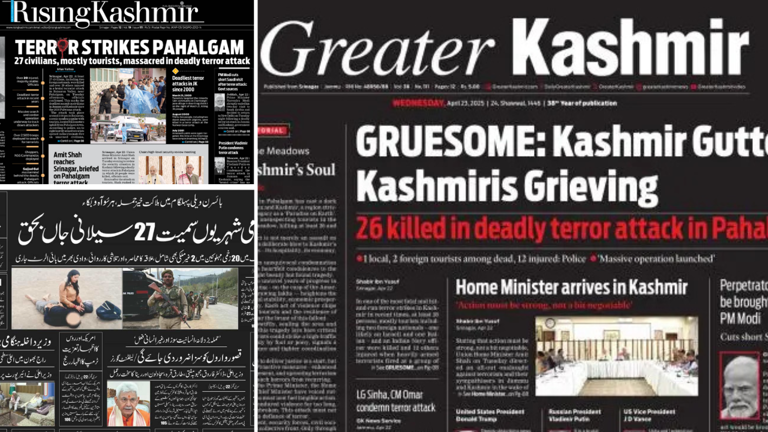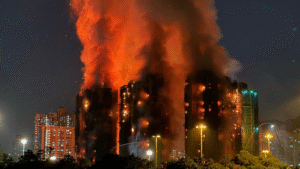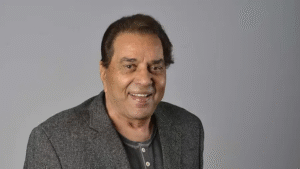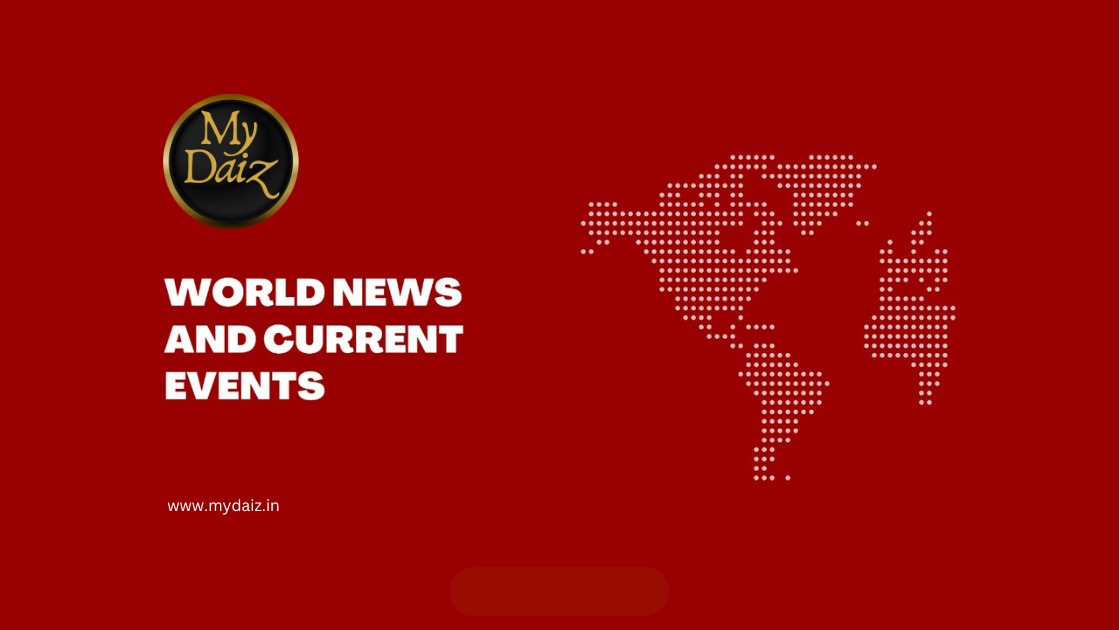A day after a horrific terrorist ambush in Pahalgam claimed at least 28 lives, Kashmir’s leading newspapers went starkly silent — visually, at least. On Wednesday, several prominent English and Urdu dailies across the Valley published entirely blacked-out front pages, replacing regular content with haunting tributes to the victims and a powerful visual protest against the escalating violence.
Publications including Greater Kashmir, Rising Kashmir, Kashmir Uzma, Aftab, and Taameel-e-Irshad presented their editions in somber black, adorned with minimal white or blood-red text. The message was clear: mourning, resistance, and a collective demand for change.
The headlines were raw and unflinching.
Greater Kashmir opened with the chilling: “Gruesome: Kashmir Gutted, Kashmiris Grieving”, while the subhead, written in red, simply read: “26 killed in deadly terror attack in Pahalgam.” Similar sentiments echoed across other dailies, calling it one of the Valley’s darkest days in recent history.
‘Massacre in the Meadow’
In its editorial titled “The Massacre in the Meadow – Protect Kashmir’s Soul,” Greater Kashmir described the attack as more than an atrocity—it was an attack on Kashmir’s very identity.
“This heinous act is not merely an assault on innocent lives but a deliberate blow to Kashmir’s identity and values — its hospitality, its economy, and its fragile peace,” the editorial read. “Kashmir’s soul stands in unequivocal condemnation of this brutality and offers heartfelt condolences to the victims’ families, who sought beauty but found tragedy.”
The blackout gesture wasn’t just symbolic mourning — it was a clarion call. The attack exposed deeper flaws in the region’s security infrastructure, particularly in areas like Baisaran, a scenic but vulnerable meadow accessible only by foot or pony.
Urging Security Reforms and Community Vigilance
The editorial pointed to the disturbing security lapse, stating:
“The fact that terrorists could strike a high-traffic tourist spot, accessible only by foot or pony, reveals a disturbing gap in our preparedness.”
It called for urgent upgrades in intelligence coordination, proactive security strategies, and, critically, a renewed emphasis on community engagement.
A United Front Against Terror
Concluding with a rallying appeal, the editorial urged unity:
“This attack must not sow division but unite us in defiance of terror. We urge all — government, security forces, civil society, and citizens — to forge a collective front. Only through unwavering resolve can we protect our land’s future, ensuring that Pahalgam’s meadows echo with laughter, not gunfire.”
Across Srinagar and other towns, the grief was palpable. Locals held candlelight vigils and silent marches well into the night. The blacked-out newspaper front pages — now widely shared on social media — stood as more than a protest. They became a promise: that Kashmir’s voice, even in sorrow, will not be silenced.







